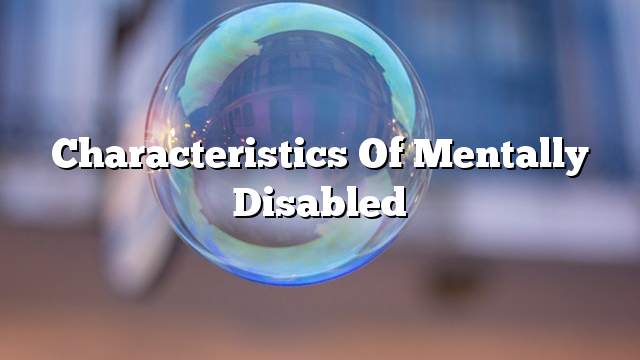mental handicap
A condition that affects the mental and social development of the individual, so that the individual is not equal, and less than the average, followed by a lack of social and cultural performance, showing them multiple manifestations, such as slow to stand or talk because of physical disability, and mentally disabled individuals with different qualities of natural individuals, Their mental level compared to normal individuals of the same age, as well as the decline of mental development of disabled individuals in many areas, because of the low mental abilities, especially in the behavioral, social and motor, and the same shortcomings in the field All, and in this article we will show the characteristics of individuals with disabilities mentally.
Characteristics of mentally disabled
Cognitive Characteristics
The mentally disabled person declines in mental capacity (intelligence) due to the decline in his ability to make up the general capacity. This decline is evident since the birth of the high and middle stage. The child does not show the cognitive or mental level of the environment. Kindergarten or school, and the most important characteristic of mentally disabled children, include:
- Mental retardation is a characteristic of all mentally disabled individuals. The rate of maturity and mental progress is lower for those of their age. The higher the mental age of normal individuals, the greater the mental age is one year for the mentally disabled. , But mentally disabled children are much less.
- Poor attention: Lack of attention is one of the main problems of mentally disabled children, so it needs a dedicated approach in dealing with them.
- Memory impairment: It is a weakness in the retrieval of information that is stored in memory, that is, their short-term memory, and factors affecting the memory of the mentally disabled:
- The delay in direct recall is unlike the old ones.
- Differences fade in indirect recall for the material, but the difference continues in the original article of the educational position.
- Repetition beyond the necessary limit benefits the mentally disabled, and disperses the organs.
- The nature, extent and length of the material clearly affects the scientific results.
- To enhance the positive impact of learning outcomes.
- Cognitive impairment: The inability of the mentally disabled to compare and analyze, and can not arrange the events surrounding it in an appropriate manner.
Physical and motor characteristics
There are clear differences between the performance and the motor self of both mentally and physically disabled, as the degree of disability increases. The disabled with severe disabilities have many physical malformations in the head and limbs, in addition to slow motor growth, including walking, balance and precise skills. Epilepsy, convulsions.
Sensory characteristics
The lack of mental abilities affects physical abilities, which in turn affect sensory abilities, because the mentally disabled suffer from a significant lack of sensory information transmitted by the sensory organs.
Emotional characteristics
One of the most important aspects of mental disability is that they find it very difficult to make friends, tend to introvert and withdraw, and sometimes there are aggressive and harmful situations. The degree of emotion varies according to the individual’s degree of disability, the surrounding environment, and social experiences.
